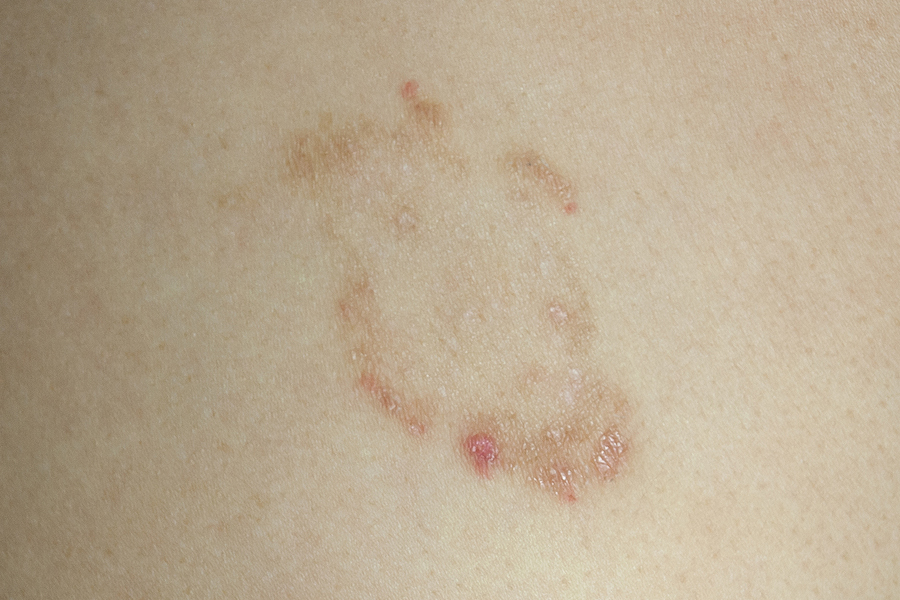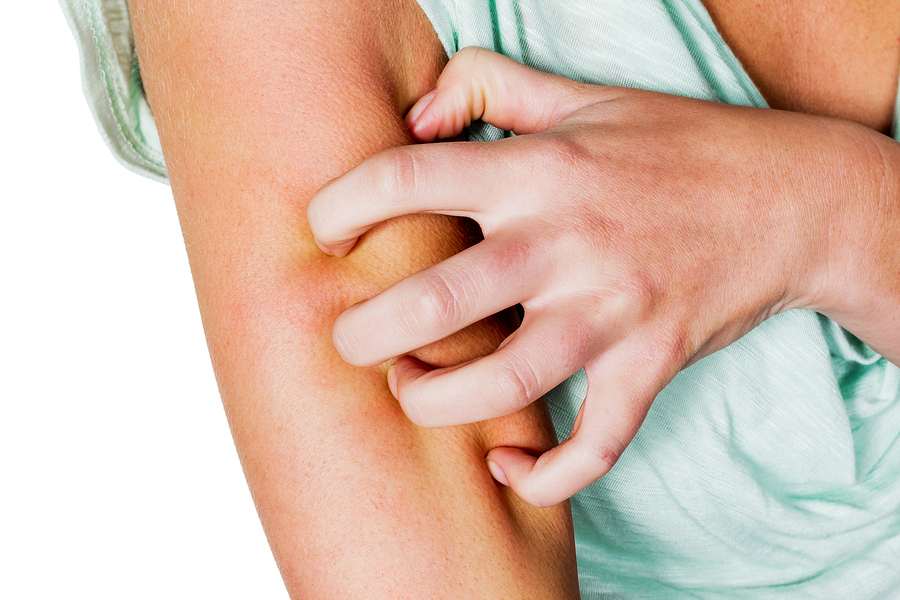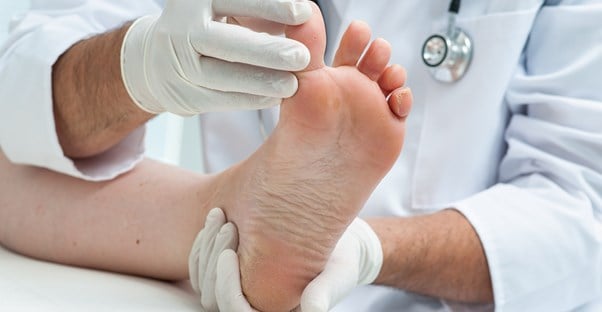What is ringworm?

Ringworm is a highly contagious fungal infection that lives and spreads on the outer layer of your skin. Growth is more common in areas of frequent sweating such as the groin or between the toes because heat and moisture help the fungi grow and thrive. Children are more susceptible to catching ringworm, but adults can be affected as well. More than three million cases of ringworm occur in the U.S. every year.
What does a ringworm look like?

Ringworm is not a worm, which a common misconception. The fungi that cause ringworm are microscopic organisms that live off of the dead tissues of your skin, hair, and nails. When isolated in laboratory petri dishes, the fungus that most commonly causes ringworm, trichophyton rubrum, grows into a colony that is white and cottony on the surface with a red underside.
How do you get ringworm?

Similar to how a mushroom grows on the bark of a tree, ringworm is able to live on the surface of your skin. Ringworm is highly contagious, and you can get it from an infected person, animal, object, or even soil. The spread of ringworm can be prevented by not sharing towels and other linens that can carry the fungus, as well as not walking barefoot in communal areas.
What are the symptoms of ringworm?

Ringworm is characterized by round lesions that resemble red rings on your skin, usually found on the body, the scalp, the feet, and the groin. Classic ringworm looks like a red ring of small blisters or scaly skin that grows outward as the infection spreads. Sometimes ringworm can resemble other conditions, such as nummular eczema, but since these conditions require very different treatments, it is important to be able to distinguish between the two.
The symptoms of ringworm on the body will typically include a round patch-like rash on the chest, stomach, arms, leg, or back that is red and scaly and might contain small blister-like bumps. The rash can be located on the face, ears, or both and it will not have a distinct border in this region. It also might get worse if you spend time in the sun. Ringworm of the groin will usually be found in the skin folds, inner thighs, or buttocks. The edges will be more distinct, with scales and bumps or blisters. Athlete’s foot is ringworm that occurs on your feet. It is characterized by itching, peeling, and cracking on the bottoms of your feet and between your toe
How is ringworm treated?
 Author
Ron Winkler
Last Updated: October 30, 2024
Author
Ron Winkler
Last Updated: October 30, 2024

